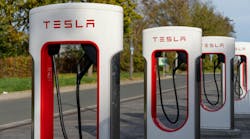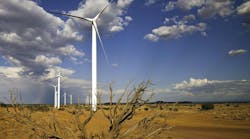Latest from Technology
A 187-page study released two weeks ago by the Department of Energy (DOE) is being parsed and debated by industry groups with interests in renewables, the utility industry, and federal and state tax breaks and other incentives for energy sources.
Requested earlier this year by Secretary of Energy Rick Perry, the massive report, titled the “Staff Report to the Secretary on Electricity Markets and Reliability,” offers a deep dive into the growth and dependability of the various energy sources that power the U.S. electrical grid. The study does not debate the fact that natural gas, solar and wind are playing increasingly important roles in the U.S. electrical grid and that coal and nuclear, for years the main power sources for the grid, are on the decline.
But some advocates of renewable energy — which the study referred to as (VRE) variable renewable energy — take issue with what they perceive to be its negative slant on the intermittent nature of renewables like solar and wind power, and the report’s discussion of how they might not be as reliable as conventional power sources such as coal and nuclear power. Another point of contention is the study’s discussion of how federal and state tax incentives have driven much of the growth in the wind and solar industries at the expense of traditional energy technologies.
An article about the DOE report posted on the National Resource Defense Council’s website said in part, “DOE’s long-awaited grid study grasps for any possible rationale to support outdated, expensive, and highly polluting coal plants, but fundamentally fails to come up with concrete reasons to do so. The report is disjointed, making misguided recommendations to relax environmental rules and saddle customers with extra costs that are largely unconnected to and unsupported by the report’s findings.”
One of the DOE study’s findings that trade groups on all sides of the energy issue seem to agree with is the notion that an electrical grid with a diverse energy mix made up of both conventional power sources and renewables is more reliable than a grid that depended on a few dominant power sources.
Tom Kuhn, president of the Edison Electric Institute (EEI) said in a press release, “While we are still thoroughly reviewing the study, EEI has long advocated that our customers are best served by public policies that promote a balanced and diverse energy mix, which includes both traditional and renewable energy sources, and that also recognize the vital role 24/7 energy sources play in sustaining a secure, reliable and resilient energy grid.
“We also believe it’s important to value investments in more robust infrastructure, while maintaining a diverse energy mix that eliminates single points of failure. Whether to limit impacts from inevitable storms or natural events or to prepare for malicious cyber or physical attacks, supporting a resilient energy grid is an investment in national and economic security.”
Tom Kiernan, CEO of the American Wind Energy Association (AWEA), Washington, D.C., supported the study’s discussion of wind energy’s contribution to a more resilient electrical grid. “The wind industry appreciated the opportunity to contribute analysis to DOE during this process, and we look forward to completing our review and continuing to work with DOE and the Federal Energy Regulatory Commission,” he said in a press release. “We agree with DOE that it makes sense to determine how a portfolio of domestic energy resources can ensure grid reliability and resilience. Wind energy contributes to the grid services that incumbent baseload also provides, and will continue to be a growing part of a reliable, resilient U.S. electric grid.
“DOE’s comprehensive report provides a number of valuable policy recommendations. In particular, DOE’s recommendations to value essential reliability services, which wind provides; to minimize regulatory barriers to energy production; and to accelerate infrastructure and transmission development are prudent and will help continue America’s wind power success story.”
Comments by Abigail Ross Hopper, president and CEO of the Solar Energy Industries Association (SEIA), Washington, D.C. had a similar diplomatic tone. “While we are still reviewing the specifics of this study, it’s been proven time and again that a diversified electricity mix is good for the overall system and poses no threat to the reliability of our nation’s grid,” she said in a press release. “Solar and other renewables provide significant cost savings, relieve pressure on our nation’s infrastructure and improve the grid’s overall performance.”
While some of the study’s findings are open to debate, there’s little doubt that the future investment in renewable power sources dwarfs that of coal and nuclear plants (see table above or click here to see details on the 1,000-plus renewables projects underway or in the pipeline.). The U.S. Energy Information Administration’s recently published Annual Electric Generator Report listed solar and wind projects planned and underway from 2017 to 2027 of more than 35,000 MW, with wind projects totaling 23,748MW and solar projects worth 11,517MW.
It’s a different picture for coal and nuclear. The report only listed two nuclear plants either planned or underway: Georgia Power’s Vogtle plant being built in Waynesboro, GA, and a multi-reactor facility in Carbon, ID, being planned by Utah Associated Municipal Power Systems (UAMPS). In July, South Carolina Electric & Gas stopped construction of two new nuclear units at its Jenkinsville, SC, facility.
On the coal front, it doesn’t appear that any large plants will be firing up anytime soon. Although the EIA’s Annual Generator Report lists 1,277MW in planned construction of coal-fired plants, construction of a 850MW plant in the report proposed by a consortium of Georgia-based municipal utilities called Power4Georgians appears to have been postponed. And the future of a 320MW Wyoming coal plant that has been in the planning stages for two decades by Two Elk Generation Partners is also in doubt, according to a Jan. 2016 report in the Casper Star Tribune. The paper said PacifiCorp terminated its interconnection agreement with Two Elk, and that the group had $207,775 in unpaid taxes and was under federal investigation for misuse of stimulus funds.











